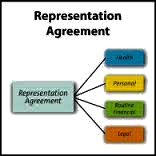Zeligs Estate v Janes 2016 BCCA 280 contains an excellent review of the law relating to severance of a joint tenancy, thus converting it into a tenancy in common:
[45] Like any owner, a joint tenant is entitled to deal freely with his or her interest in property. Accordingly, a joint tenant may sever a joint tenancy, with or without the consent or knowledge of the other joint tenant(s) and subject to contrary statutory provision. After a joint tenant dies, however, severance is no longer possible because death extinguishes the joint interest. For this reason, a testamentary disposition cannot sever a joint tenancy: Bergen v. Bergen, 2013 BCCA 492 (CanLII) at para. 40; Hansen Estate at para. 63; A.J. McClean, “Severance of Joint Tenancies” (1979) 57 Can. Bar Rev 1 at 2, 38-41.
[46] When a joint tenancy is severed, the joint tenancy is converted into a tenancy in common and the right of survivorship is extinguished. In consequence, each affected co-owner becomes entitled to a distinct share rather than an undivided interest in the whole: Bergen at para. 40; Flannigan v. Wotherspoon (1952), 7 W.W.R. (N.S.) 660 at 665 (B.C.S.C.). In joint tenancies composed of more than two persons, a blend of interests may be present. For example, if A, B and C are joint tenants a severance of A’s interest will convert it into a tenancy in common, however, B and C will continue to be joint tenants with rights of survivorship between themselves: McClean at 6; Law Reform Commission of British Columbia at 5.
[47] Severance is typically effected in one of three ways: by one person’s acting unilaterally upon his or her own share so as to destroy the four unities (for example, by selling it); by mutual agreement (for example, by written contract); or by “any course of dealing sufficient to intimate that the interests of all were mutually treated as constituting a tenancy in common” (for example, by conduct which demonstrates all tenants mutually dealt with their interests as several). Other possible modes of severance include bankruptcy, partition or an order made under matrimonial property legislation: Williams v. Hensman (1861), 70 E.R. 862 (Eng. Ch.); Tessier Estate v. Tessier, 2001 SKQB 399 (CanLII) at para. 8.
[48] Vice-Chancellor Wood described the three primary modes of severance, now known as the “three rules”, in Williams at 867:
3 Ways to Sever Joint Tenancy:
- In the first place, an act of any one of the persons interested operating upon his own share may create a severance as to that share. The right of each joint-tenant is a right by survivorship only in the event of no severance having taken place of the share which is claimed under the jus accrescendi. Each one is at liberty to dispose of his own interest in such a manner as to sever it from the joint fund – losing, of course, at the same time, his own right to survivorship.
- Secondly, a joint-tenancy may be severed by mutual agreement.
- And, in the third place, there may be a severance by any course of dealing sufficient to intimate that the interests of all were mutually treated as constituting a tenancy in common. When the severance depends on an inference of this kind without any express act of severance, it will not suffice to rely on an intention, with respect to the particular share, declared only behind the backs of the persons interested. You must find in this class of cases a course of dealing by which the shares of all the parties to the contest have been effected, as happened in the cases of Wilson v. Bell [(1843), 5 IR. Eq. 501 (Eng. Eq. Exch.)] and Jackson v. Jackson [(1804), 9 Ves. 591 (Eng. Ch.)]
[49] Rule 1 concerns the destruction of an essential unity by a joint tenant’s unilateral action. As a matter of law, any such act automatically severs a joint tenancy: Bergen at para. 40. Rules 2 and 3 concern the joint tenants’ common intention and operate in equity. Where it would be unjust to permit parties to assert survivorship rights because of their conduct, equity intervenes to prevent them from doing so: Hansen Estate at para. 39; Ziff at 345.
[50] Vice-Chancellor Wood’s judgment in Williams is the usual starting point in a severance analysis, although some jurists and commentators disagree on its meaning. In particular, the extent to which rule 2 and rule 3 differ is controversial, as is the role, if any, that estoppel doctrine plays. For example, in Tompkins Estate v. Tompkins (1993), 1993 CanLII 1119 (BC CA), 99 D.L.R. (4th) 193 (B.C.C.A.) Southin J.A. opined that Vice-Chancellor Wood was postulating a species of estoppel in rule 3 and disagreed with the trial judge’s view that severance requires either alienation or agreement, preferring to say it requires “… either alienation or agreement or facts which preclude one of the parties from asserting that there was no agreement” (199). However, to the extent she interpreted rule 3 as a species of estoppel requiring proof of detrimental reliance, Winkler C.J.O disagreed in Hansen Estate, observing that a course of dealing sufficient to sever requires only that the co-owners knew of the other’s position and mutually treated their interests as several (at paras. 46-51). In addition, some commentators question whether rules 2 and 3 are truly distinguishable: McClean at 16; Ziff at 345-347.
[51] This case is primarily concerned with rule 1, the unilateral destruction of an essential unity. As in Farley v. Pearlson, 2003 BCCA 37 (CanLII), it is thus unnecessary to analyse the full reach and meaning of Williams with respect to rules 2 and 3. Nevertheless, at trial Mr. Zeligs argued that there was a rule 3 severance based on the parties’ course of conduct and the judge considered both rules 1 and 3, noting the diverging authorities. In these circumstances, I think it prudent to comment on certain factors that may contribute to the controversy and suggest a possible route to its resolution.
[52] The leading English authorities on severance are Williams and Burgess v. Rawnsley [1975] Ch. 429 (Eng. C.A.). The reasons for judgment in both state that rules 2 and 3 cover separate methods of severing a joint tenancy, with severance by mutual agreement covered by rule 2. However, in undertaking a rule 3 analysis courts sometimes focus on whether there was an implied agreement between the parties. In other words, the parties’ course of dealings is sometimes analysed under rule 3 as evidence of facts from which an agreement to sever is inferred rather than as a separate method of severance: see, for example, Flannigan. In my view, this approach blurs the line between rules 2 and 3.
[53] I agree with Winkler C.J.O. in Hansen Estate that rule 3 is a conceptually distinct method of severance which does not encompass implied agreement. I also agree with Wright J. in Tessier that the parties’ conduct may provide an evidentiary basis from which agreement can be inferred (at para. 12). Nevertheless, mutual agreement, express or implied, is captured by rule 2 and should be analysed accordingly. The question under rule 3 is whether, in the absence of agreement, it would be unjust to permit a party to assert survivorship rights because of the parties’ mutual treatment of their interests.
[54] Further, I see no reason to limit Southin J.A.’s rule 3 requirement of “facts which preclude one of the parties from asserting that there was no agreement” to cases involving detrimental reliance, nor do I think she necessarily did so. Rather, in my view, on the facts of Tompkins Estate Southin J.A. considered it just to permit the respondent to assert survivorship rights, given the matrimonial context and the parties’ conduct, which, unlike the conduct at issue in Williams, included no element of reliance. However, on different facts it might well be unjust to do so where co-owners have mutually demonstrated a common intention to treat their interests as several. Depending on the circumstances, this may be true regardless of whether detrimental reliance can be shown: Hansen Estate at paras. 35-51.
[55] Ascertaining whether a joint tenancy has been severed is a factual question, often determined on the basis of reasonable inference(s). It requires the application of a legal standard to the facts as found by the trial judge. Accordingly, on appeal the standard of palpable and overriding error applies to the judge’s finding that a severance has been effected: Fuller at paras. 36-38; Flannigan at 666; Tessier at para. 12.
Rule 1 – Severance by Unilateral Action
[56] When a joint tenant transfers his or her property interest the unity of title is broken and severance follows, subject to contrary statutory provision. For example, in some systems of title registration a transfer must be registered or the co-owner’s consent obtained before a severance takes effect: see, Land Titles Act, 2000, S.S. 2000, c. L-5.1, s. 156. In British Columbia, however, s. 18(3) of the Property Law Act, R.S.B.C. 1996, c. 377 provides that a joint tenant may sever a joint tenancy by transferring property to himself or herself without requiring that the co-owner(s) be notified and s. 30 of the Law and Equity Act, R.S.B.C. 1996, c. 253 allows for severance by transfer of personal property to oneself and another. In addition, s. 20 of the LTA provides that an instrument purporting to transfer an interest in land does not pass a legal or equitable interest unless the instrument is registered, except as against the person making the instrument.
[57] In Stonehouse v. British Columbia (Attorney General), 1961 CanLII 48 (SCC), [1962] S.C.R. 103 the Supreme Court of Canada considered a predecessor provision similar to s. 20 of the LTA. Based on the exception for the maker of the instrument, the court held an unregistered transfer deed executed by a joint tenant severed the joint tenancy. This result followed because, without purporting to pass the other tenant’s interest, by dealing with her own, the transferring joint tenant changed the character of the other into a tenancy in common by operation of law. In effect, the exception embedded within the statutory provision preserved the common law rule.
[58] Unlike transfers, mortgages do not usually take effect by way of conveyance; they operate by way of security as a charge against title. In British Columbia, s. 231 of the LTA provides that a mortgage operates to charge the mortgagor’s estate or interest in land. In consequence, the four unities are not broken when a mortgage is granted and a joint tenancy is not severed: Ziff at 344. Nor does a unilateral statement of intention to sever effect a severance. Some form of action or mutual agreement is required to sever a joint tenancy: Walker v. Dubord (1992), 1992 CanLII 2095 (BC CA), 67 B.C.L.R. (2d) 302 (C.A.) at para. 23.
[59] Property can be converted from one form to another without effecting a severance, but not by unilateral action. For example, it is possible to convert land into money or vice versa without necessarily severing the joint tenancy. The law permits joint tenancy in personal property no less than in realty, thus a joint tenancy may carry on following a land sale by all joint owners because joint ownership may continue in relation to the sale proceeds: Allingham v. Allingham, [1932] VLR 469; Walker at para. 41. However, if the sale proceeds are divided the four unities are destroyed and, in consequence, the joint tenancy is severed: Flannigan at 665-666; Tessier at paras. 11-12; Ziff at 345.
Further reading on tenancy in common
Joint Tenancy vs. Tenancy in Common
Joint Tenancy, Tenancy in Common and the Right of Survivorship
The Nature of a Joint Tenancy









